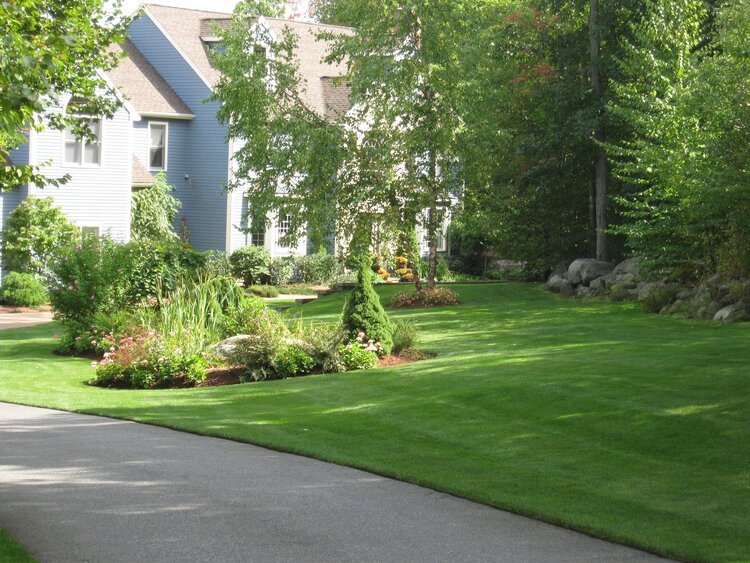Key Takeaways
- An introduction to the fundamental concept of hydroseeding and its associated advantages.
- An analytical comparison between traditional seeding methods and hydroseeding.
- An exploration of the diverse and flexible applications of hydroseeding in various landscapes.
- An assessment of hydroseeding’s ecological benefits and sustainable nature as a landscaping practice.
- Discussions highlighting the critical determinants for successful hydroseeding undertakings.
- Guidelines for the appropriate aftercare and maintenance that follow hydroseeding procedures to ensure lawn vigor and longevity.
Table of Contents
- Basics of Hydroseeding: A Quick Overview
- Hydroseeding vs Traditional Seeding: A Comparative Study
- Hydroseeding Applications: From Highways to Backyards
- Sustainability Aspects of Hydroseeding
- Factors Influencing Hydroseeding Success
- Proper Care and Maintenance After Hydroseeding
- Conclusion: The Growing Popularity of Hydroseeding in Landscaping
Basics of Hydroseeding: A Quick Overview
Hydroseeding has sprung up as a beacon of innovation within landscaping, altering how professionals and homeowners alike conceptualize and create lush, verdant lawns. It’s an avant-garde approach that mixes seed, mulch, fertilizer, and a binding agent in a water-based slurry, which is then meticulously sprayed across barren or eroded land with precision. This process is incredibly transformative in diverse environmental settings, such as those found in the rolling topography of hydroseeding Rancho Santa Fe San Diego. The advanced technique promises expedited germination rates and ensures uniform growth and substantial soil stabilization, offering a significant boon to any landscaping project.
Hydroseeding vs Traditional Seeding: A Comparative Study
When establishing new lawns, the comparison between hydroseeding and traditional hand-seeding methods reveals a stark contrast. Traditional seeding can often be a gamble; the exposed seeds are at the mercy of avian appetites or the capriciousness of the wind. In comparison, hydroseeding affords the seeds a substantially better environment for germination thanks to its protective slurry blanket. The mulch component retains moisture at an optimal level, which is exceptionally indispensable during critical drought conditions or in areas with water restrictions. Additionally, hydroseeding offers a more homogenous distribution of seeds, resulting in a lawn that showcases consistency in its growth pattern and density.
Hydroseeding Applications: From Highways to Backyards
The utility of hydroseeding extends beyond mere utility to versatility. From the expansive embankments along freeways to the quaint backyards of suburban homes, this technique has proven itself as a go-to solution. Its adaptability allows it to efficiently address a spectrum of topographical and environmental challenges—including steep slopes or hard-to-reach areas where traditional planting methods might falter. Moreover, the methodology behind hydroseeding permits a tailored approach to landscaping; varied blends of grass or specialty seeds can be incorporated into the mixture to meet specific aesthetic or climatic needs, offering an impressive level of customization for any landscape.
Sustainability Aspects of Hydroseeding
The discourse around landscaping increasingly calls for sustainable and environmentally friendly approaches. Hydroseeding rises to meet and exceed this demand. The hydroseeding process encourages soil integrity, unlike conventional methods that may lead to substantial soil disturbance and erosion. The practice leverages organically derived mulch, often comprising recycled paper or wood fiber, which fosters seed growth and biodegrades, enriching the soil. As a testament to these principles, the Environmental Protection Agency’s Greenscapes initiative provides detailed guidance and resources that harmonize with hydroseeding’s environmental stewardship and conservation ethos.
Factors Influencing Hydroseeding Success
The triumph of hydroseeding is hinged on several critical factors, including proficient preparation of the seed bed, astute selection of the right seed mixture, suitable soil conditions, and a regime of vigilant aftercare. Landscape architects and contractors often stress the importance of understanding the local environment, significantly influencing the seed mix choice and the hydroseeding slurry’s composition. The seeds are ready for maximum development when the timing is carefully planned to coincide with suitable weather conditions. The machinery and technique used in hydroseeding are equally significant, underscoring the need for professional-grade equipment and experienced technicians to deliver inimitable results.
Proper Care and Maintenance After Hydroseeding
The period immediately following hydroseeding is vital, as it sets the stage for the long-term success of the lawn. Consistent watering, particularly in the initial weeks, helps establish root systems sustaining healthy, durable grass. Stepping foot on the fragile, nascent grass could lead to compaction issues. Hence, traffic should be minimized. Furthermore, introducing nutrients through timely fertilization promotes vigorous growth, culminating in a lawn that is not merely transiently lush but enduringly robust. This level of care is instrumental and, when executed correctly, results in a landscape that echoes vitality and radiance.
Conclusion: The Growing Popularity of Hydroseeding in Landscaping
The landscape of modern landscaping is ever-evolving, with hydroseeding emerging as an acclaimed star in this sector. The method has garnered approval for its blend of functionality, efficiency, and its nod to ecological consciousness. The synergy between these qualities has spurred its adoption across various landscaping frontiers—from expansive commercial settings to intimate residential locales. As technology within the landscaping industry continues to advance and innovate, the principles of hydroseeding remain a steadfast ally to those pursuing the zenith of lawn development and maintenance. This convergence of trends is beautifully encapsulated in cutting-edge articles that celebrate the progression and broadening appeal of hydroseeding across the globe.

